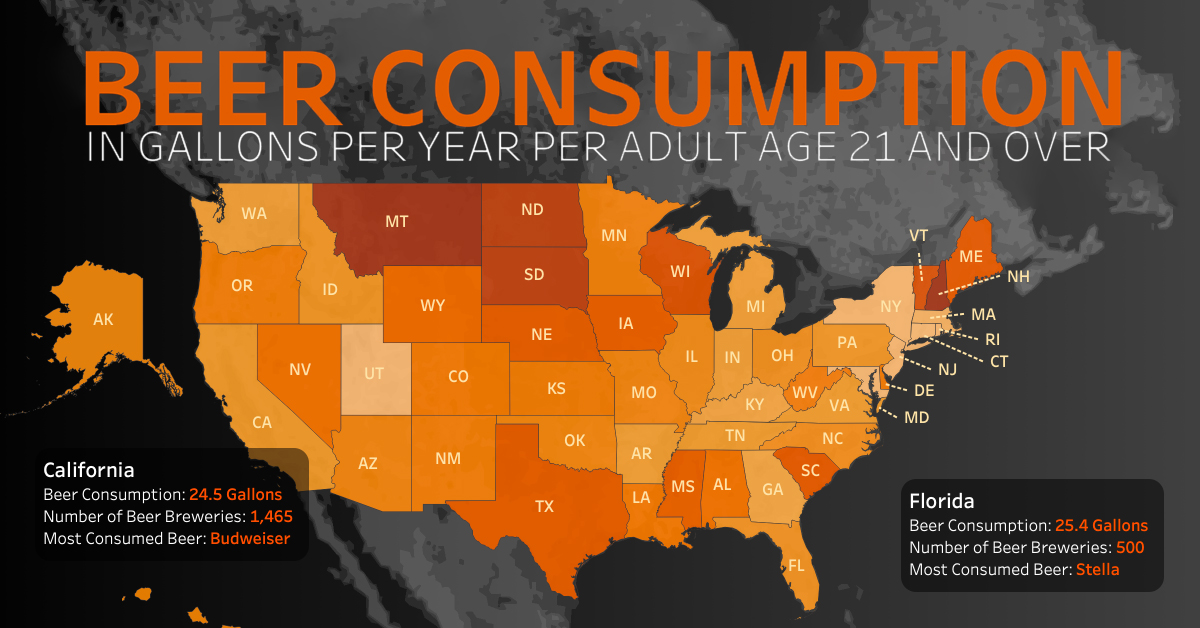Discover the fascinating results of the 2021 survey on how many beers it takes each state to get tipsy. #beer #survey

Image courtesy of Anete Lusina via Pexels
Table of Contents
Whether you are relaxing at a backyard barbecue, unwinding after a long day at work, or celebrating a special occasion, you may find yourself asking the age-old question: How many beers does it take to get drunk? Understanding alcohol metabolism, individual tolerance levels, and various factors influencing intoxication can provide valuable insights into how alcohol affects our bodies.
Alcohol Metabolism
Alcohol metabolism refers to the process by which the body breaks down and eliminates alcohol. When you drink a beer, the alcohol is absorbed into your bloodstream through the stomach and small intestine. From there, it is metabolized primarily in the liver by enzymes such as alcohol dehydrogenase and aldehyde dehydrogenase. These enzymes convert alcohol into acetaldehyde and then into acetate, which is further broken down into carbon dioxide and water.
Several factors can influence alcohol metabolism, including weight, gender, and age. Generally, individuals with higher body weight have a higher blood volume, which can dilute alcohol and result in lower blood alcohol levels. Gender differences in alcohol metabolism are due to variations in body composition, enzyme activity, and hormonal levels. Additionally, as we age, our liver function may decline, affecting how quickly we metabolize alcohol.
Individual Tolerance Levels
Alcohol tolerance refers to the body’s ability to handle increasing amounts of alcohol over time. Tolerance levels can vary widely among individuals, influenced by genetic factors, drinking patterns, and overall health. Some people may develop high tolerance levels due to frequent alcohol consumption, while others may have lower tolerance levels despite similar drinking habits.
It is essential to recognize the signs of tolerance and to drink responsibly based on your own limits. Ignoring your tolerance level can lead to dangerous levels of intoxication and increase the risk of alcohol-related harms.
Factors Influencing Intoxication
Several factors can influence how quickly you feel intoxicated after drinking beer. The type of alcohol consumed and its alcohol content play a significant role in intoxication levels. Beers with higher alcohol by volume (ABV) will lead to faster intoxication compared to lower ABV options.

Image courtesy of www.visualcapitalist.com via Google Images
Drinking speed and rate of alcohol absorption also impact intoxication. Consuming multiple beers in a short period can overwhelm your liver’s ability to metabolize alcohol, leading to a rapid increase in blood alcohol concentration. Eating food before or while drinking can slow down alcohol absorption and reduce the risk of intoxication.
Other external factors can affect intoxication, such as medications, stress levels, and overall health. Some medications can interact with alcohol and intensify its effects, while stress and fatigue can lower your tolerance to alcohol, making you more susceptible to intoxication.
Conclusion
As we delve into the science behind how many beers it takes to get drunk, it is crucial to drink responsibly and know your limits. Understanding alcohol metabolism, individual tolerance levels, and the various factors influencing intoxication can help you make informed decisions about your alcohol consumption.
Next time you reach for a beer, remember to pace yourself, choose your drinks wisely, and prioritize your well-being. By drinking responsibly and being mindful of your body’s response to alcohol, you can enjoy a safe and enjoyable drinking experience.
Frequently Asked Questions
How many beers does it take to get drunk?
The number of beers needed to get drunk varies for each individual based on factors like weight, tolerance levels, and alcohol content. Generally, moderation is key to avoiding intoxication.
Can food affect how quickly you get tipsy?
Yes, consuming food before or while drinking can slow down alcohol absorption, reducing the risk of getting tipsy quickly. It’s essential to eat before drinking to help manage intoxication levels.
How does gender impact alcohol metabolism?
Gender can influence alcohol metabolism due to variations in body composition and enzyme activity. Generally, women tend to reach higher blood alcohol levels more rapidly than men, requiring them to be more cautious with their alcohol consumption.
What factors contribute to individual tolerance levels?
Individual tolerance levels to alcohol are influenced by genetic factors, drinking habits, overall health, and frequency of alcohol consumption. Understanding your own tolerance level and drinking responsibly are essential to prevent over-intoxication.
Generated by Texta.ai Blog Automation
Leave a Reply